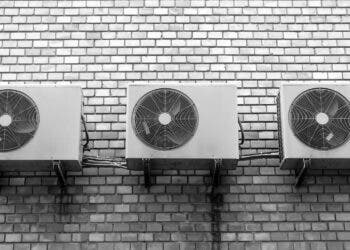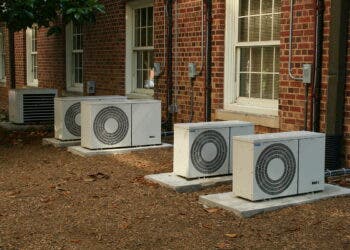Using more ACs comes with a hidden cost. From now until 2050, the use of air conditioners to deal with growing temperatures could lead to a rise in greenhouse gas emissions, amounting to approximately 10 million metric tons of carbon dioxide in Europe and a staggering 120 million metric tons in India, according to a new study by an international team of researchers.

The study is the first one to show the impact of climate change on the demand for air conditioners and electricity for cooling in Europe and India. The researchers found both Europe, with milder weather and richer countries, and India, with poorer and hotter states, will see increasing purchasing of ACs, coupled with a surge in electricity usage.
“With electricity production still based essentially on fossil fuels, air conditioning as a heat adaptation strategy risks undermining our mitigation efforts, meaning, reducing greenhouse gas emissions,” Enrica De Cian, professor of environmental economics at Ca’ Foscari university in Italy and the study coordinator, said in a media statement.
Adapting to the climate crisis
The researchers estimated that by 2050, under a warming scenario of 2 degrees Celsius, the adoption of air conditioning would double in Europe and increase fourfold in India. This surge would mean that 40% of the households in both regions would have air conditioning, mitigating the exposure to heat associated with global warming.
However, this widespread adoption of air conditioning will also have a significant impact on emissions. The energy demand resulting from increased air conditioner usage is expected to contribute to annual CO2 emissions rising by 7 to 17 million tons in Europe and between 38 and 160 million tons in India between now and 2050.
“In countries such as Italy and Spain, choosing air conditioning as an adaptation strategy to rising temperatures will also lead to an increase in peak electricity consumption. This effect could, in turn, cause rises in the price of electricity,” Francesco Colelli, researcher and co-author of the study, said in a media statement.
The researchers said that mitigating the increases in emissions would require a much higher energy efficiency of the air conditioners sold and a further push towards decarbonization of the energy sector. Changes in households’ cooling behavior could also help, they said, suggesting the use of ventilation instead of AC when possible.
Although ventilation is not as efficient as air conditioning in alleviating thermal discomfort, it consumes significantly less energy. Even when factoring in the additional electricity consumption from running fans, operating an AC at a higher temperature threshold could decrease household annual electricity consumption by 40-60% in Europe and 50-60% in India.
There are about two billion ACs in use around the world today, with half of those units in the US and China. Cooling systems account for 20% of the energy used in buildings globally. The climate crisis could increase that percentage significantly, leading to higher emissions. This raises the need to find and implement solutions, the researchers said.
The study was published in the journal Scientific Reports.






